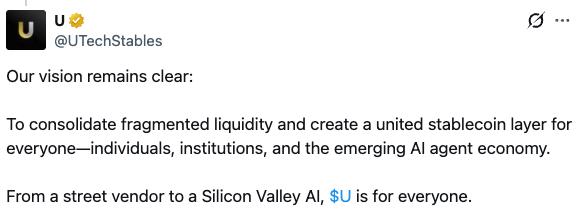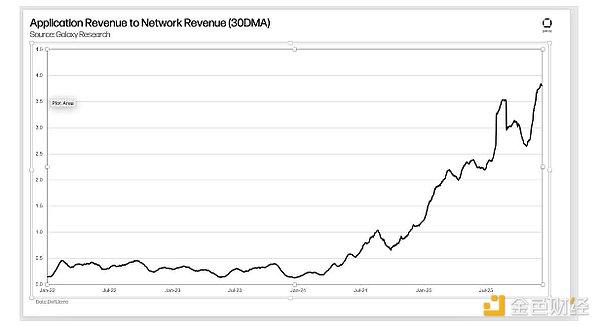
Last week, BTC reached a maximum of 64,000, which is very close to the high of 69,000 in the previous bull market. At the same time, the prices of newly issued assets in the market are constantly being pushed up, and bubbles are forming and amplifying. For players who have opened BTC positions in the past two years, they have begun to think about a question, what stage is BTC at now? When should you take profits and exit?
Glassnode provides a large number of BTC analysis indicators, from which two indicators, Net Unrealized Profit/Loss (NUPL) and Long/Short-Term Holder Threshold (Long/Short-Term Holder Threshold), are selected to see what the market is doing. location.
Unrealized net profit and loss (NUPL, Net Unrealized Profit/Loss)

The question that Net Unrealized Profit and Loss (NUPL) attempts to answer is: How much of the circulating supply of Bitcoin is in profit or loss at any given point in time, and to what extent?
NUPL describes the overall profit and loss status of BTC by calculating the difference between the current market value and the realized market value. The NUPL calculation formula is: (Market Cap — Realized Cap) / Market Cap. The realized market capitalization is the cumulative sum of Bitcoin’s prices at the time of its previous move. The unrealized market value is obtained by subtracting the realized market value from the current market value. If the unrealized market value is negative, the market as a whole is in a state of loss; if it is positive, it indicates that the market as a whole is profitable. The specific value of NUPL is obtained by dividing the unrealized profit or loss by the current market value. The smaller the profit and the larger the loss, the closer to the bottom; the larger the profit and the smaller the loss, the closer to the top.
NUPL is divided into 5 areas. The red area is below 0, which is a loss area and is also a buying area. The orange area is between 0–0.25, which is a micro-profit area. The yellow area is 0.25–0.5. The green area is 0.5–0.75. The blue area is above 0.75. Generally, a price below 0.25 is a good buying area, and a price above 0.5 may indicate a bull market.

Looking at the history, you can see:
1. NUPL gives a good hint of the bottom area. In the second half of 2022, it will basically be below 0. The tips for the top range are relatively broad. The bull market in 2017 touched the blue zone for a very short time, but it did not touch the blue zone at all in 2021, and the entire bull market ran in the green zone. This increases the difficulty of judging the top area.
Where we are currently, we were in the green zone from early December to early January, then fell into the yellow zone for almost a month before entering the green zone again on February 7th. It is currently the second time in this cycle that it has entered the green zone, lasting for nearly a month.
2. During the 14-month period from December 2016 to January 2018, NUPL was basically in the green zone. During this period, BTC rose from $780 to $17,000, an increase of approximately 21 times.
NUPL was also in the green zone for the 11-month period from October 2020 to May 2021, and from August 2021 to December 2021. Between October 2020 and May 2021, BTC rose from US$13,000 to US$63,000, an increase of approximately 4.8 times.
Judging from the duration, the green zone lasted for more than 10 months.
3. It should be noted that the first two major bull market surges started after the halving. Compared with this year, BTC was close to a new high before the halving, and NUPL has also been running in the green zone for more than 2 months. This time, we cannot simply follow the halving trend.
In the previous two rounds of bull markets, the halving market has had a greater impact on BTC production cuts, resulting in a significant reduction in supply and an increase in mining costs, resulting in a situation in which supply exceeds demand and promotes price increases. In this bull market, most BTC has entered circulation, and the impact of halving on supply has been reduced; at this time, the passage of BTC ETF has brought a large number of buying orders, which has also caused a situation of shortage of supply and promoted the early start of the market. . The market price of BTC will be more affected by US monetary policy and US stock market conditions.
Changes in long-term and short-term holdings (Long/Short-Term Holder Threshold)

Long-term held BTC refers to BTC that has not been moved in the same address for more than 155 days, while short-term held BTC refers to BTC that has been moved in the same address within 155 days. Changes in this indicator allow you to see when long-term holders are accumulating tokens and when they are selling tokens.
Currently, the total number of BTC held long-term is approximately 14.5 million, and the total number of BTC held short-term is approximately 2.87 million. It can be seen that approximately 83% of BTC is held for a long time.
Looking at the history, you can see:
1. In early January 2017, the price of BTC reached US$900, which was close to the bull market high at the end of 2013 (US$1,000). Long-term BTC holdings began to be reduced and sold. The selling trend continued into early 2018. Correspondingly, the number of short-term BTC holdings has increased significantly.
2. Throughout 2018, BTC was in a downward trend, while long-term BTC holdings were in a growth trend. Investors continued to accumulate BTC during this period.
3. In April 2019, after BTC exceeded $5,000, long-term holdings of BTC were reduced. By August 2019, after BTC fell, the long-term accumulation amount continued to rise until 2020.
4. In October 2020, after BTC exceeded $11,000, long-term holdings of BTC were reduced. The reduction trend continues until April 2021.
5. In November 2021 and June 2022, long-term holdings of BTC experienced a brief decline, but then showed a continuous growth trend.
6. In early December 2023, long-term holdings of BTC began to decrease. From the peak of 14.98 million coins, the number dropped to 14.5 million coins, a decrease of approximately 500,000 coins. Currently, this trend continues.
BTC market capitalization ratio (BTC.D)

Currently, BTC market capitalization accounts for 53.87% of the total cryptocurrency market capitalization.
Observing historical data, you can see:
1. The market value of BTC increases in the bear market and decreases in the bull market. The lows of the 2017 bull market and the 2021 bull market are both around 40%.
2. In each round of bear market, the proportion of BTC market value gradually decreases, forming a trend line. The current share is still within the trend line range. Since the current bear market, the highest proportion has been around 54%.
3. At the high point of the bull market, BTC’s market value share should drop to about 40%. At present, BTC’s market capitalization ratio has not yet shown a clear downward trend.
in conclusion
The net unrealized profit and loss (NUPL) is higher than 0.5, and the BTC holding address obtains more than 50% of unrealized profits. BTCNUPL was above the 0.5 range during the 2017 and 2021 bull markets, which lasted 14 months and 11 months respectively and occurred after the halving. This year, it has been in the general profit range for 2 months before the halving. The market situation is different from before, and may be more affected by US monetary policy and US stock market conditions. For example, the determination of the timing of interest rate cuts may bring about a correction in the market.
Judging from the changes in long-term and short-term holdings (Long/Short-Term Holder Threshold), long-term holdings of BTC are currently at historical highs. However, long-term holders will gradually reduce their BTC holdings starting in December 2023. This behavior is similar to 2017 and 2020. Long-term holders will continue to be in a selling position when BTC breaks through the previous bull market high and the current bull market high.
Judging from the BTC market capitalization ratio (BTC.D), the current BTC market capitalization ratio is still at a relatively high level, and there has not yet been an obvious downward trend. The general rise of copycats and the main rising wave market have not yet started.
Overall, BTC is in the early stage of the main rising wave market, while the main rising wave market of Altcoin has not yet started.
LD Capital
As a global blockchain investment firm, we have built a portfolio of over 250 investments since 2016, spanning across various sectors, including infrastructure, DeFi, GameFi, AI, and the Ethereum ecosystem. We focus on investing in projects with disruptive innovations, actively taking on the role of primary investors, and providing comprehensive post-investment services to these projects. We employ a combination of direct investment from our own funds and a distributed fund model to cover all-stages of investment.
Trend Research
Trend Research division specializes in crypto hedge funds focusing on secondary areas within the crypto market. Our team members come from top platforms and institutions like Binance and CITIC. We excel in macroeconomics, industry trends, and project data analysis, with trend, hedge, and liquidity funds.
Cycle Trading
We specialize in Web3 project investment and service, with a strong emphasis on Infra, applications, and AI. We have a team of nearly 20 senior engineers and dozens of crypto experts as advisors, assisting projects in strategic design, capital platform relations, and liquidity enhancement.
website: ldcap.com
twitter: twitter.com/ld_capital
mail: BP@ldcap.com
medium:ld-capital.medium.com








